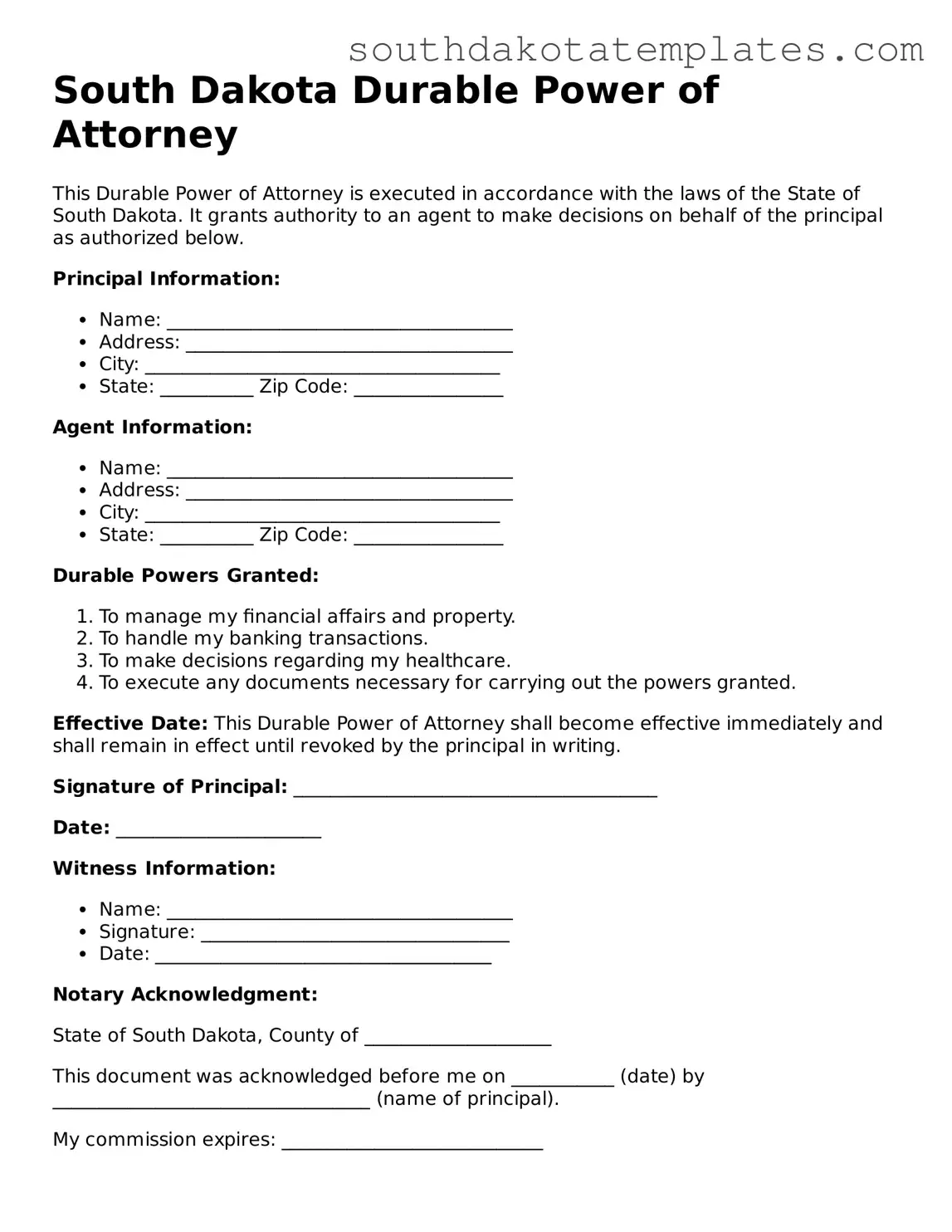Free South Dakota Durable Power of Attorney Document
A Durable Power of Attorney form in South Dakota allows an individual to designate someone else to make financial and legal decisions on their behalf, even if they become incapacitated. This important legal document ensures that your affairs are managed according to your wishes when you are unable to do so. Understanding how to complete this form can provide peace of mind and security for you and your loved ones.
Ready to take the next step? Fill out the Durable Power of Attorney form by clicking the button below.
Get Durable Power of Attorney
